
Inhaltsverzeichnis
In a rush?
Download the PDF for later
For the past two years, the State of Product Leadership has peered into the roles of product leaders in North America. This year, with the opening of Pendo’s London office and Product Collective’s INDUSTRY conference in Dublin, we’ve brought this popular analysis across the pond. Introducing the first annual State of Product Leadership: U.K. Edition.
We surveyed 100 product leaders across the United Kingdom who own or lead teams focused on software products. We asked them about their responsibilities, effectiveness, organisational structure, career paths, and job satisfaction.
We found some surprising things:
- PMs see their roles as relatively broad, with direct responsibilities that span across the business, such as planning go-to-market strategy and achieving revenue goals.
- PMs are more focused on alignment with design and go-to-market roles like UX, marketing, and customer success than with their core engineering constituents.
- Many PMs say there’s a significant gap in their current relationship with business operations, despite reporting it as their most important area of alignment.
- To a much larger degree than their North American counterparts, U.K. product managers are satisfied in their current roles.
This eBook discusses the key findings from our research, outlines a profile of today’s product leaders, and provides recommendations for how to apply these findings with your own teams.
Übersicht
We surveyed 100 largely B2B product leaders from digital product companies (both software companies and traditional enterprises).
The majority of respondents work for B2B SaaS or hybrid companies, but a healthy sample also represent on-premise and traditional enterprise organisations.
The survey focuses mostly on England with the majority of respondents hailing from tech-centric regions like Greater London and the Southeast. Companies in our sample range from less than $25 million in revenue to over $1 billion.
Profile of the Product Manager
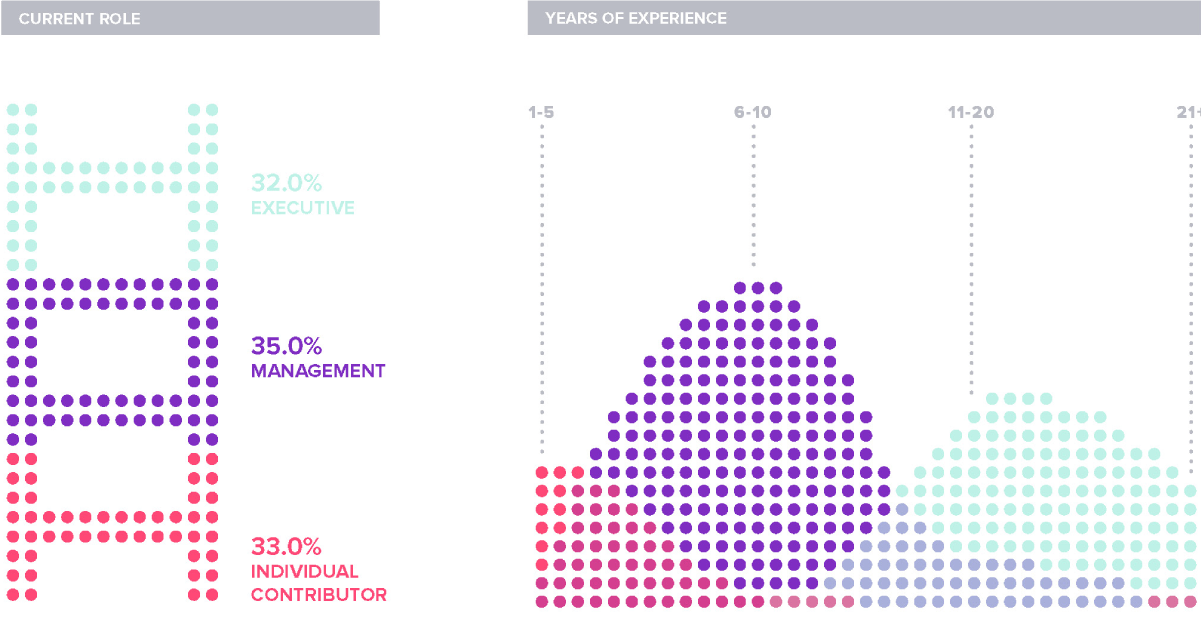
Respondents are split nearly evenly between product leaders with executive and management responsibilities and individual contributors. The majority of respondents have 6-10 years of product management experience.
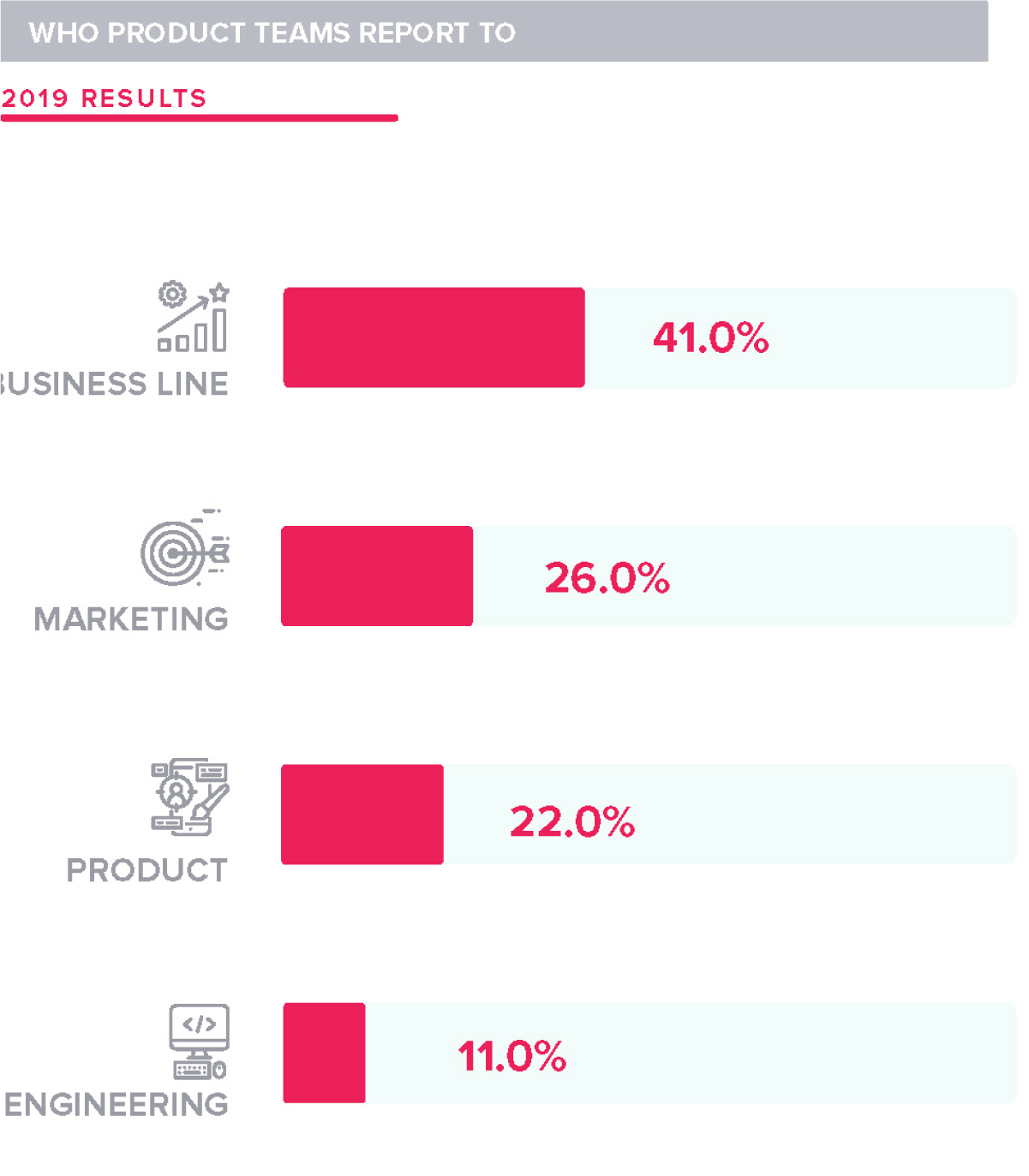
KEY FINDING 1
The majority of PMs report to individual lines of business.
Nearly half of PMs say they report into an individual business line—a sizable difference from the 21 percent of PMs in North America who say the same. For smaller companies, this may simply mean that PMs report directly to a CEO or COO. But for larger companies, this likely means reporting into a general manager or divisional leader of some sort.
However, a nearly identical proportion of PMs in the U.K. and North America say they report to their own dedicated product department. This matches a key finding in North America, based on the year-over-year growth of PMs who report to product, that CPOs are on the rise. While marketing maintains a slight edge in both regions, the appointment of a product leader in the C-suite appears to be a very real trend.

How do you get into product management? U.K. respondents took a variety of paths to their current job. Engineering and marketing reflect the technical and creative sides of the profession, while the prevalence of project management backgrounds tells us that U.K. companies may value PMs with a more process-oriented skill set.
What did PMs study? Most of our respondents say they have technical backgrounds, followed closely by business. This is not entirely surprising. Good product leaders will have a thorough understanding of how to both engineer products and create successful business strategies around them. On the other end, our results found far fewer PMs who came to the profession with creative or non-technical expertise.
Roles and Responsiblities
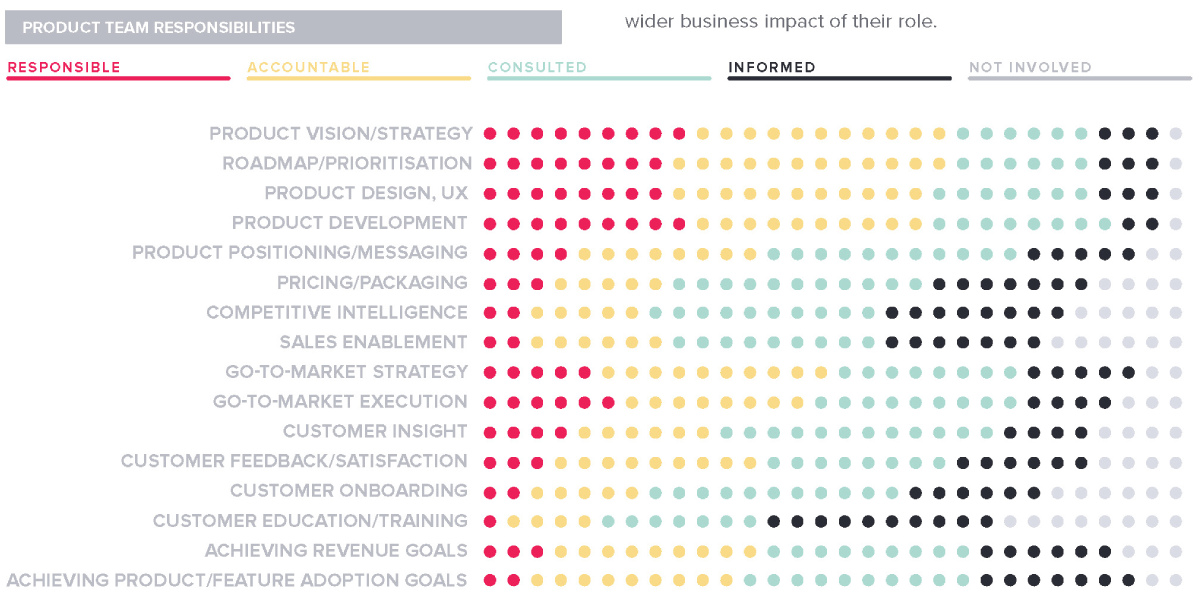
Similar to their North American counterparts, most PMs in the U.K. consider tasks such as product vision/strategy and design to be their core responsibilities. However, a healthy proportion also sees themselves as directly responsible for broader tasks like go-to-market strategy, achieving revenue goals, and roadmap/prioritisation, with revenue listed as their second most important responsibility after product vision/strategy. Given the B2B focus of this study, we can interpret this several ways.
First, product leaders in the U.K. have a decidedly holistic view of their role. Instead of focusing on a few narrow functions, as is common with most B2B product teams, they are taking a page from B2C PMs and involving themselves in multiple aspects of the product. Second, the focus on revenue makes sense given that more PMs report to lines of business. This focus also reflects the business background of many of our respondents. Unlike North American PMs, who tend to have a more circumscribed view of their responsibilities, U.K. PMs look at the wider business impact of their role.
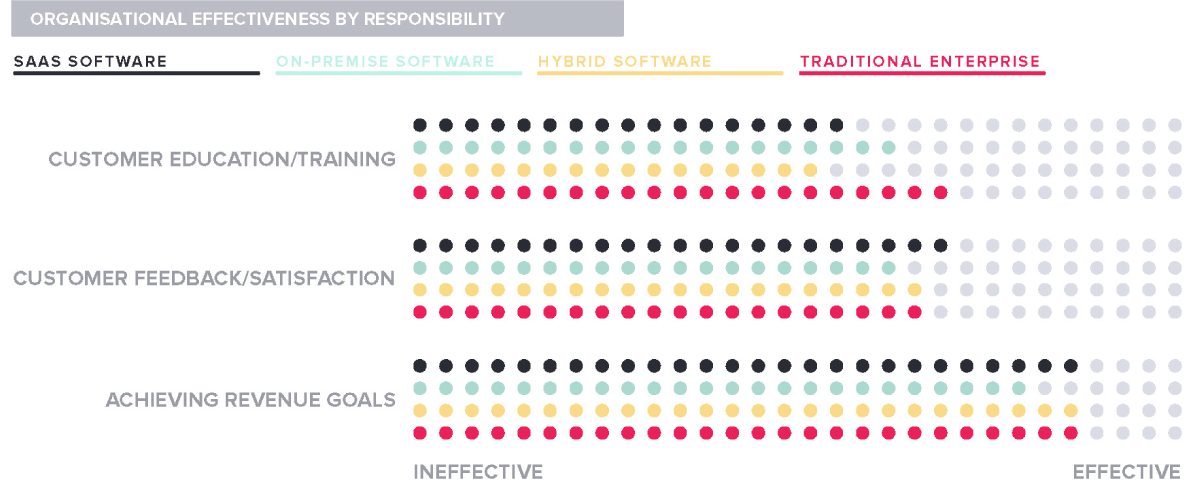
KEY FINDING 2
Despite their reliance on recurring revenues, SaaS companies are less likely than non-SaaS companies to prioritise customer education and training.
SaaS companies must continuously renew customer loyalty or risk losing their business to a competitor at renewal time. Why, then, are these companies less concerned with customer education and training? Frankly, it’s a bit perplexing. Customers who don’t use your products or don’t use them well are supremely vulnerable—and SaaS makes it easy for them to defect. Keep this in mind as you consider how you onboard, train and educate users.
Skill Sets
KEY FINDING 3
Product managers see themselves as more task-oriented than visionary.
We asked survey respondents whether they consider themselves to be more visionary or task-oriented in their approach to managing products.
U.K. PMs self-identify as more task-oriented than visionary, although to a slightly lesser extent than North American PMs. This is despite the fact that a majority of respondents say that the best PMs should be more visionary than task-oriented. This gap could be attributed to respondents’ sense of ambition. Most are individual contributors, which means they may aspire toward more visionary leadership positions.

Individual contributors describe themselves as much more task-oriented than either managers or executives. This is understandable, as they are likely buried in the details of what is often an extraordinarily busy role. However, managers and executives should still create space for their employees to think more broadly. Great product ideas can come from anywhere and everywhere.
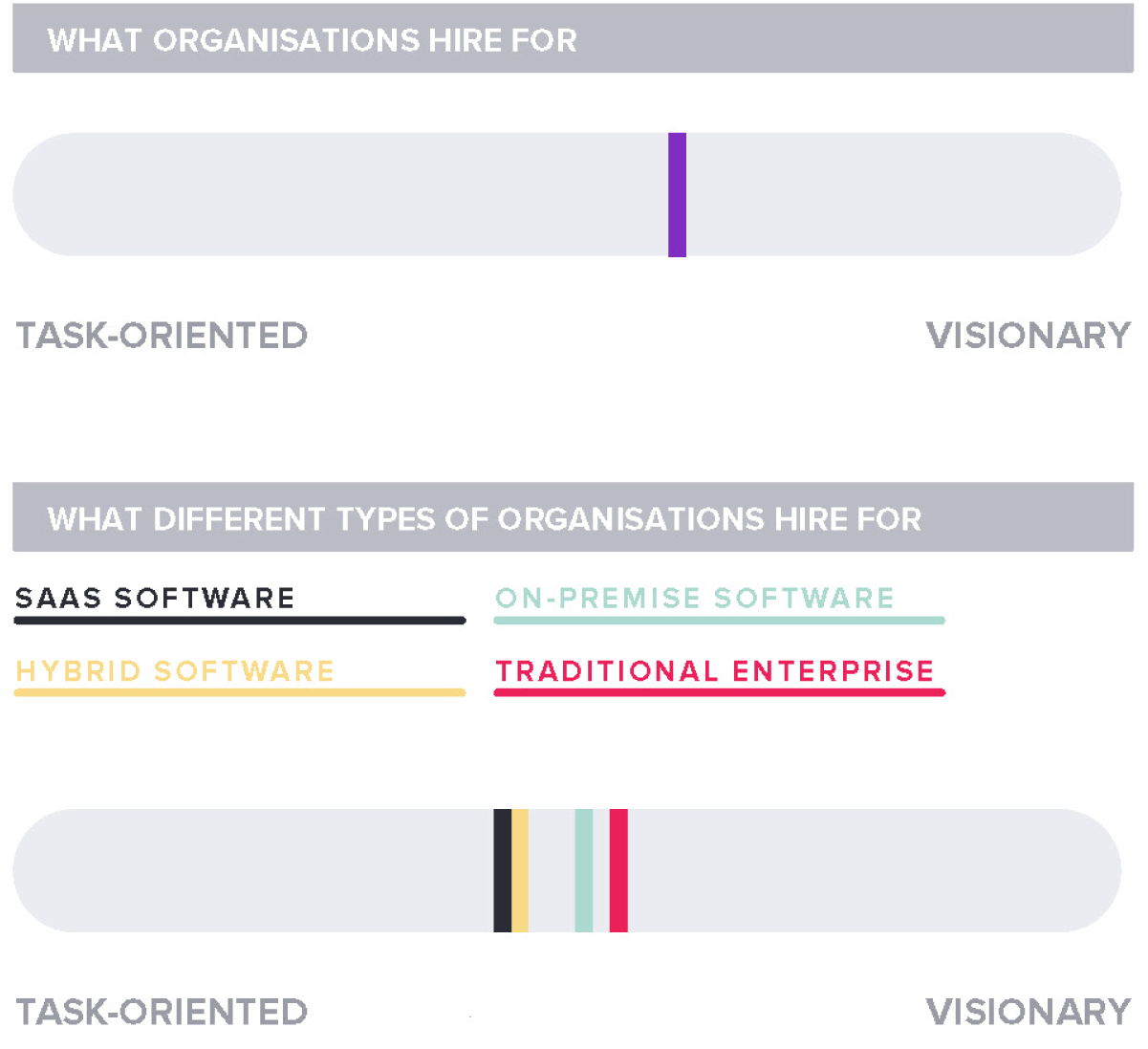
KEY FINDING 4
Companies value PMs who are more task-oriented.
Although more respondents say the ideal PM is visionary, a majority report that U.K. companies value more task-oriented PMs. We can draw multiple conclusions from this. For instance, while U.K. PMs may wish they had more visionary roles, they may still recognise that their companies place a higher premium on getting stuff done. In this case, short-term concerns may be overtaking long-term ideas. Or perhaps our respondents see their own attributes as what their companies really want. It’s hard to know for sure. Either way, most U.K. product leaders report that their companies are looking for practical doers over starry-eyed dreamers.
That said, SaaS and hybrid software companies are a bit more likely to value visionary PMs. This makes sense given the rapid pace of innovation and delivery, as well as the expectation for a steady stream of differentiated value in SaaS-based product categories. Compared to North America, though, U.K. companies are still much more biased toward task-oriented product leaders.
Organisational Alignmnet
KEY FINDING 5
Product leaders prioritise alignment with business operations, UX, customer success, and marketing over engineering.
U.K. PMs, to a slightly lesser degree than North American PMs, prioritise alignment with departments outside of engineering. While this may seem surprising—or even alarming—we interpret this finding a bit differently. PM alignment with engineering is necessary but insufficient. How products are designed, how they’re marketed and distributed, and how they’re made “sticky” for end users together comprise the holy trinity of modern software. It’s hard to find SaaS success without having these three things utterly nailed. Therefore, it makes sense that PMs are prioritising bridge building in these particular areas.
However, a large reason North American PMs can focus on other departments is because they already see their relationship with engineering as high functioning. In contrast, fewer than half of U.K. PMs feel they have a strong alignment with engineering. While this may be evidence of their increased focus on business, our findings also show that zero product leaders in the U.K. report having a strong alignment with business operations, despite listing it as their most important relationship. This should signal concern for executives and anyone else in charge of managing product teams.
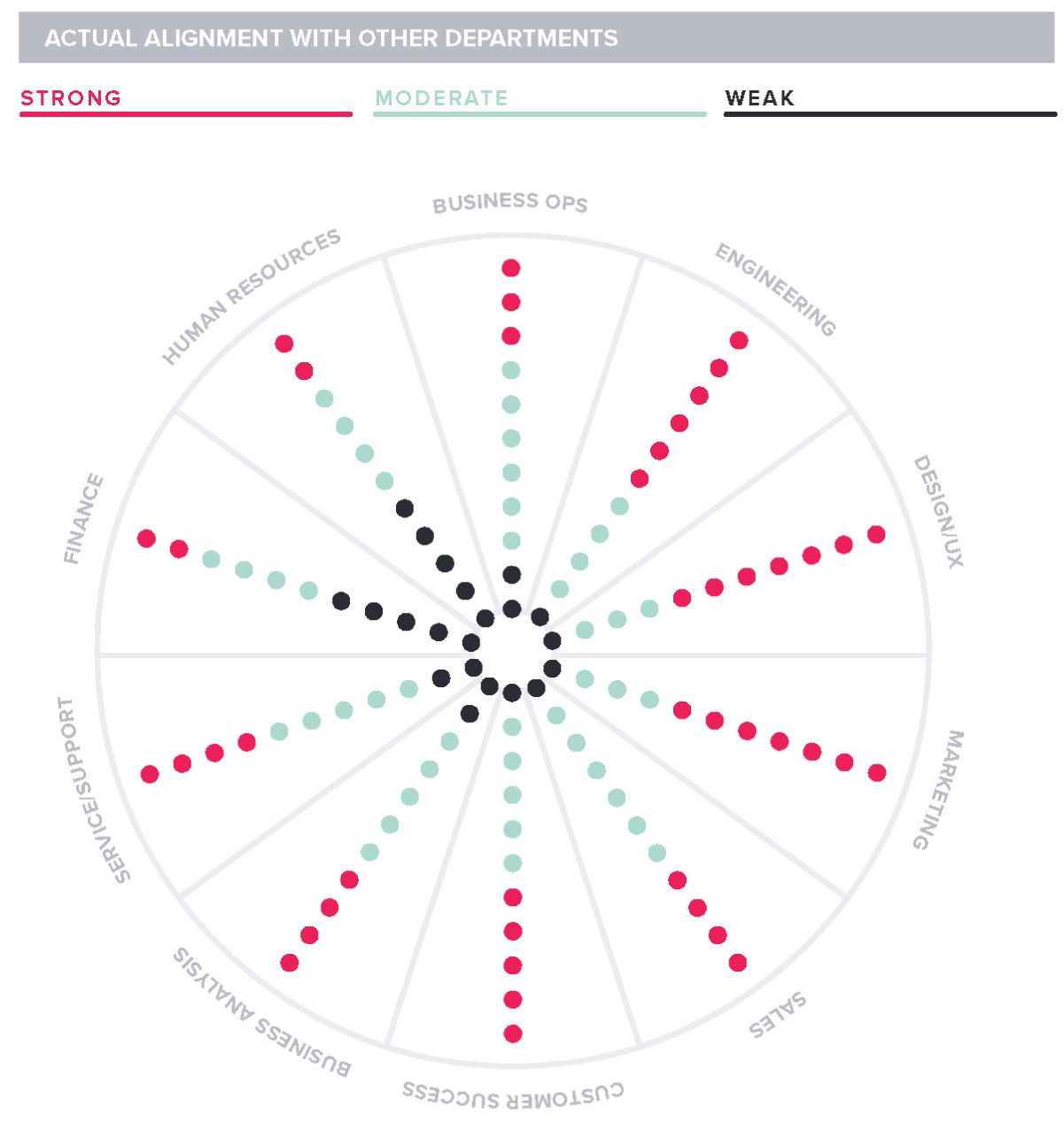
Decision-making
KEY FINDING 6
Data plays an important role for product teams. They increasingly utilise data in their decisions and continuously measure their products.
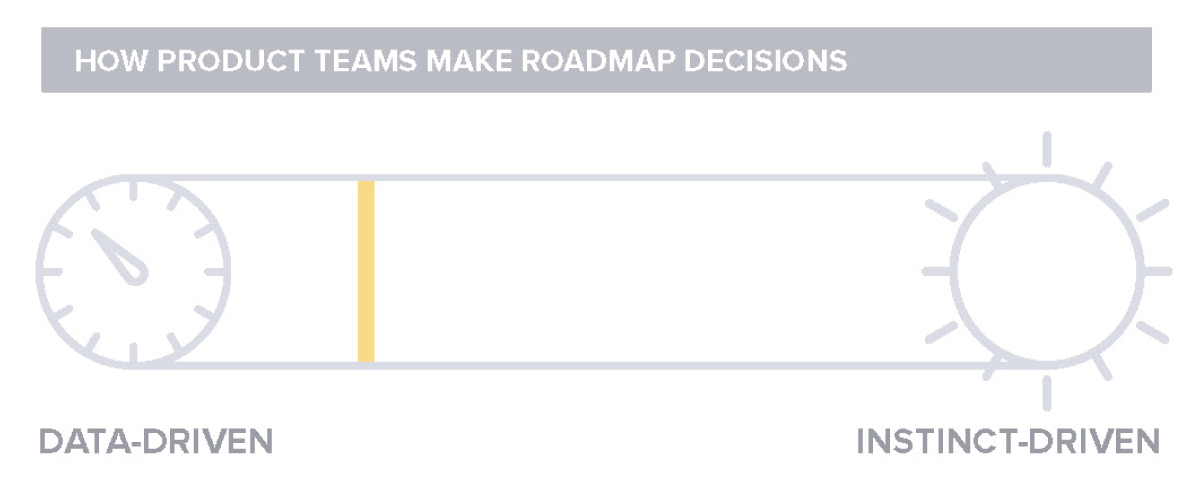
Product managers used to rely heavily on their own gut instinct. Of course, they still do to an extent, which is not a bad thing. Product management is necessarily both art and science. But PMs, even more so than in North America, see themselves as data-driven in how they make their roadmap decisions.
KEY FINDING 7
Customer needs serve as the “north star” for most product leaders.
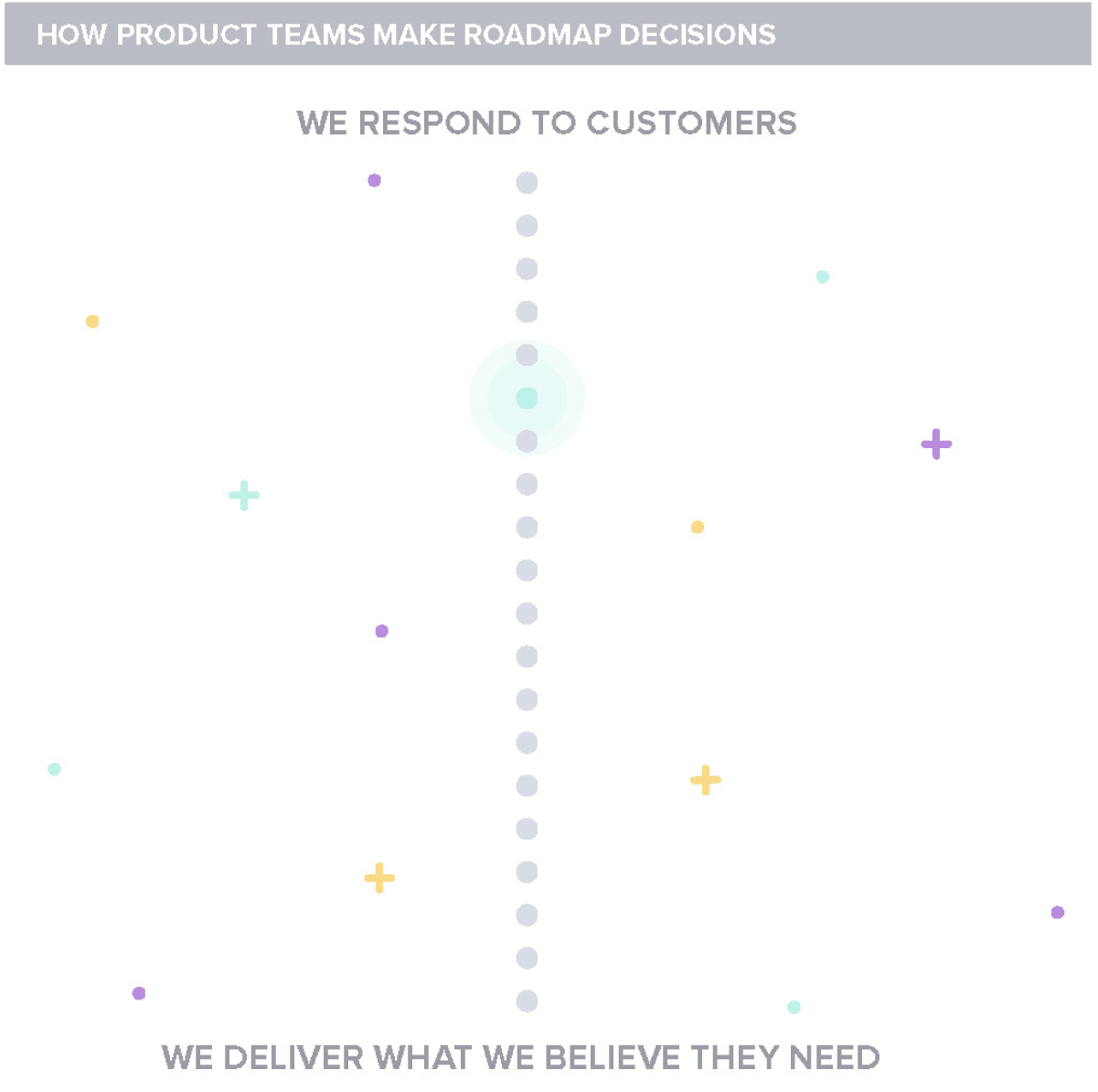
Steve Jobs famously rejected focus groups and other sources of customer feedback based on the notion that customers aren’t visionary enough to know what they want and need. According to our survey, product managers feel differently—a fact for which we are grateful. U.K. PMs tell us they make roadmap and product decisions based on what they hear from their customers.
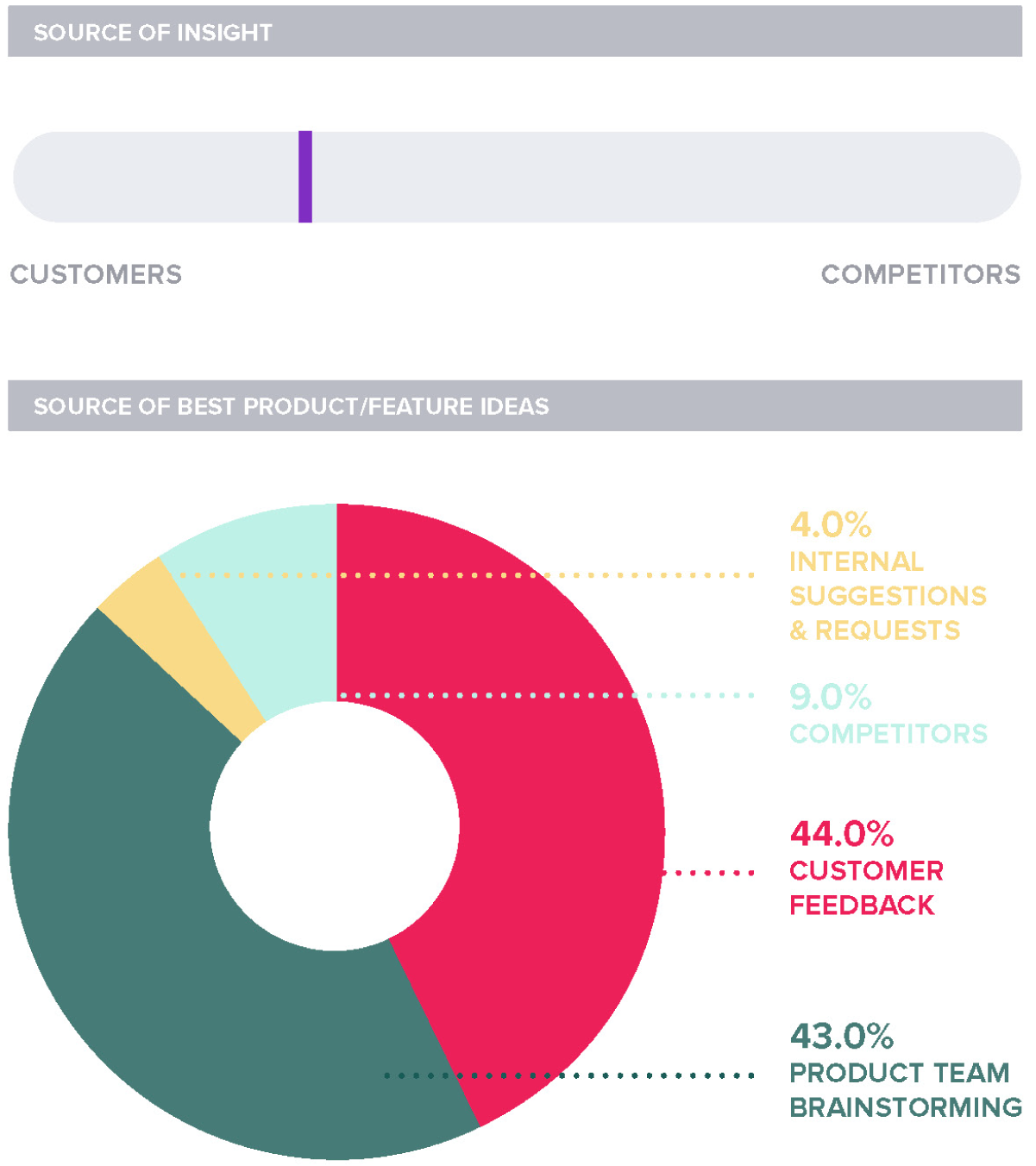
We were pleased to see that U.K. PMs are also basing their product and feature ideas on what their customers want.
Tools Used
KEY FINDING 8
PMs are comfortable using new tools for experimentation and onboarding.
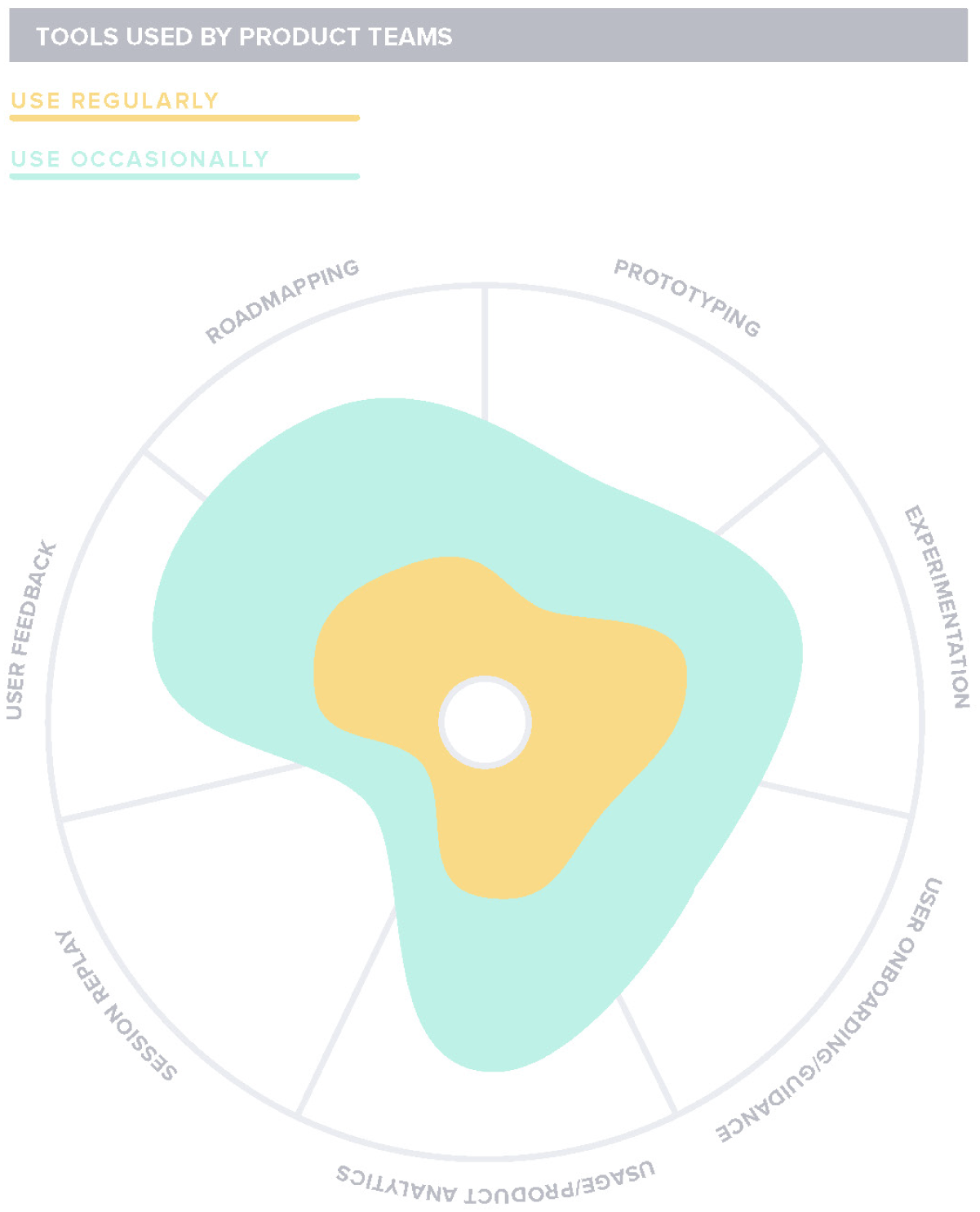
In both North America and U.K., product managers regularly use roadmapping and user feedback tools. However, U.K. PMs are more comfortable with newer tools for experimentation, product analytics, and onboarding. By instrumenting the user journey for continuous insight and guiding users to find their way to value in the product, these types of tools make it possible to build predictable and profitable businesses. Our findings suggest that U.K. companies are fully embracing this strategy.
Measurement and Performance
KEY FINDING 9
Product teams are primarily measured on revenue and product/feature adoption, not just the delivery of new features.
There was a time when product managers could declare victory—convincingly, even—once they shipped new features. Now they’re accountable for adoption, usage, value, and, ultimately, profitable revenue derived from these features. The goals that matter to product leaders should be the ones that align most directly to the business. So it’s encouraging to see that revenue, product adoption, and product usage are the three most important metrics U.K. PMs look at when measuring success.
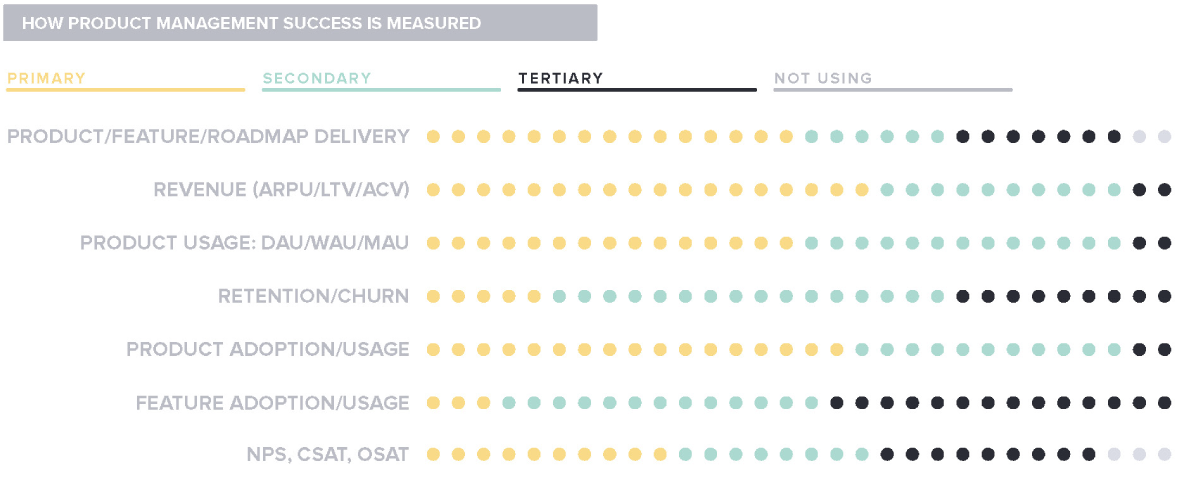
How are you doing relative to your competitors? PMs in the U.K. appear confident in their abilities. In every single category, respondents say they are performing above average. It is interesting to note, however, that they lack confidence in their methods for collecting customer feedback, as well as their ability to retain users and prevent churn. Both of these could be good indicators that U.K. PMs still have a lot of progress to make.
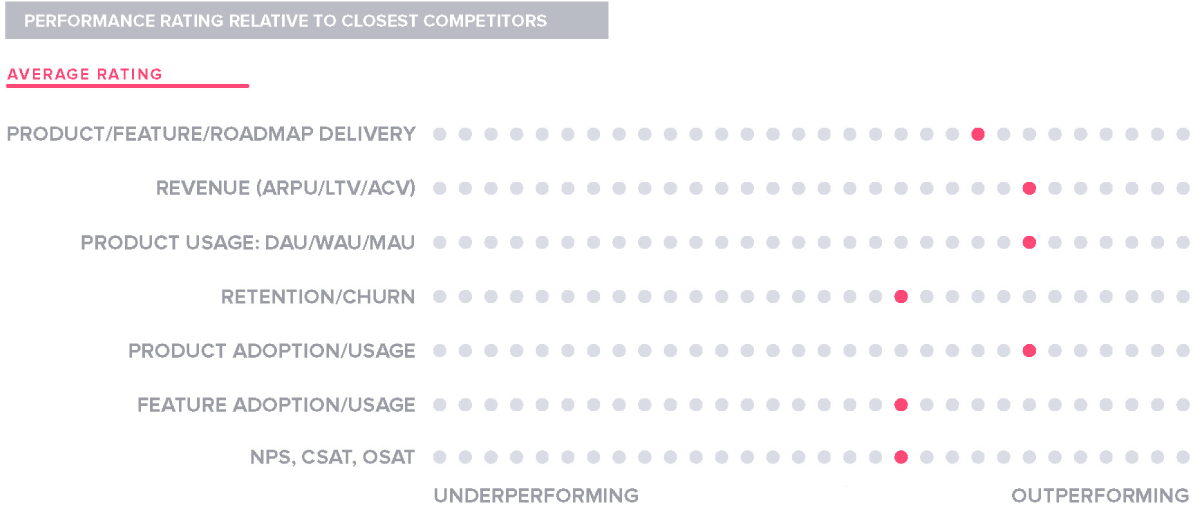
Job Satisfaction
Product leaders in the U.K. are very enthusiastic about their jobs, giving product management an NPS score of 43. In contrast, North American product leaders give their role an NPS score of 3, a substantial drop from last year’s study. How can we account for this difference? There are likely multiple factors at play, including the possibility of sheer randomness. While it’s hard to draw any firm conclusions, this early analysis makes it safe to say that U.K. PMs are doing something right.
KEY FINDING 10
Product leaders say their ideal job is the one they have now.
Consequently, it appears that many product managers are considering their options. Significantly more respondents say that their ideal job is in another discipline—with more responsibility. On average, PMs are an ambitious lot, with plenty of passion to spare. We all know that product managers lead by influence, not formal authority. Perhaps what we’re seeing here are their ambitions frustrated by this reality. Put another way, maybe what we’re seeing is the debunking of the old trope that PMs are the CEOs of their product.
We hate to end on such a down note. This finding should be instructive, not defeating. Product management is, by virtually all accounts, a role very much on the rise. What does that mean? More and more expectation of product managers—often without the formal authority, sphere of influence, or span of control to affect change. That’s a recipe for frustration. This all signals a role in transition. As product management gains a seat at the table it needs the authority to match.
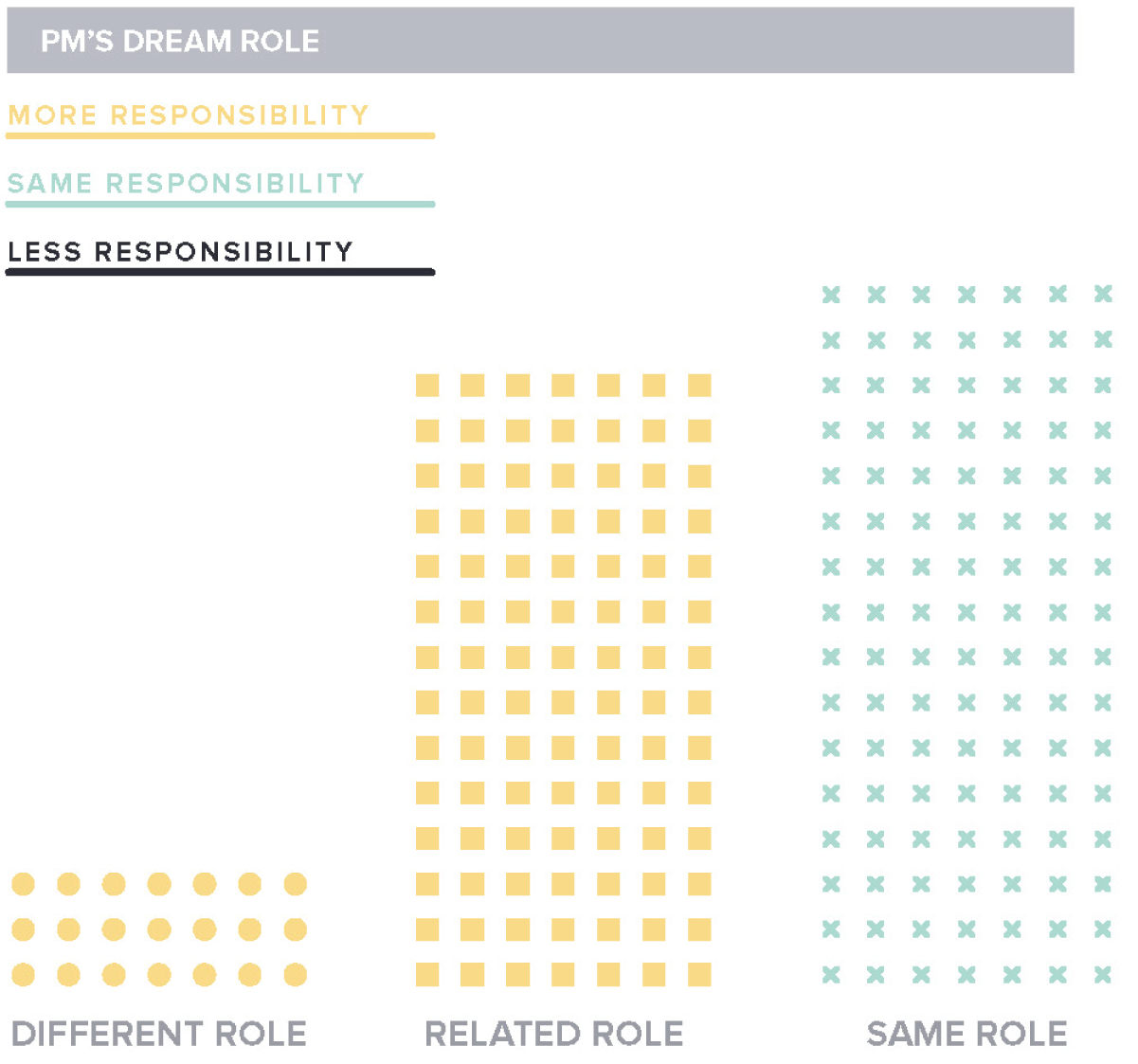
Regardless, these results show that it’s an exciting time to be a product leader in the U.K. More organisations seem to be embracing the realities of SaaS by giving their product leaders the tools and support they need to engage with their customers, as well as deliver better product and customer experiences.
So where do they go from here? Will U.K. product leaders follow in the path of North American counterparts and begin reporting more to CPOs? Or will they continue to thrive within individual business lines? It will be interesting to watch how they grow and adapt as their role matures.
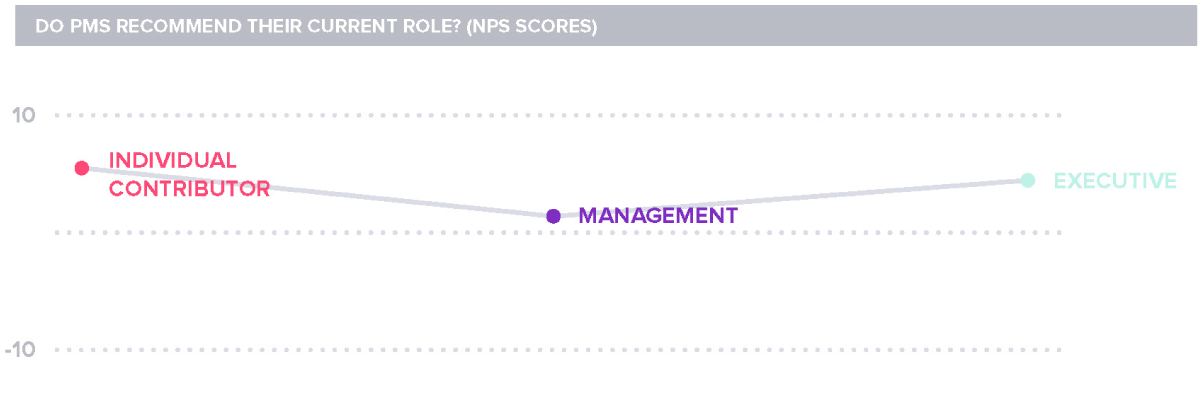
Recommendations
Mind the gaps—one of the more notable takeaways from this survey relates to alignment gaps between product management and business operations, despite the importance PMs assigned to this relationship. Take a closer look at your PM and business operations functions. Are these teams communicating and collaborating enough? Are they setting each other up for success?
Monitor KPIs—While our results showed that U.K. product leaders are doing a good job of focusing on product and feature adoption, rather than just delivering new features, they should continue monitoring this as their role matures. Remember: where the metric goes the effort flows. Be sure your teams are continually oriented to downstream goals aligned to measures of value and growth: adoption, usage, satisfaction, retention, and expansion.
Reconsider reporting lines—the most mature product organisations are led by a C-level executive with a seat at the table. Where does product report in your organisation? As business advantage increasingly bends toward innovation and design, do your current reporting lines give product the central focus and attention it deserves? Does it situate product as close as possible to the customer and the market? Unless you can answer these questions with an unequivocal yes, consider restructuring this year.
Look to B2C for inspiration—B2B PMs need to think differently as consumer buying behaviors and experience expectations expand into their world. Customers bring their consumer expectations to work. Thus, B2B product managers should look to the best B2C applications and experiences to inform how they own products. Simple, intuitive, personalised, inviting, and delightful—these should be the watchwords for, and characteristics of, any product, regardless of whether it’s designed for business or consumers.